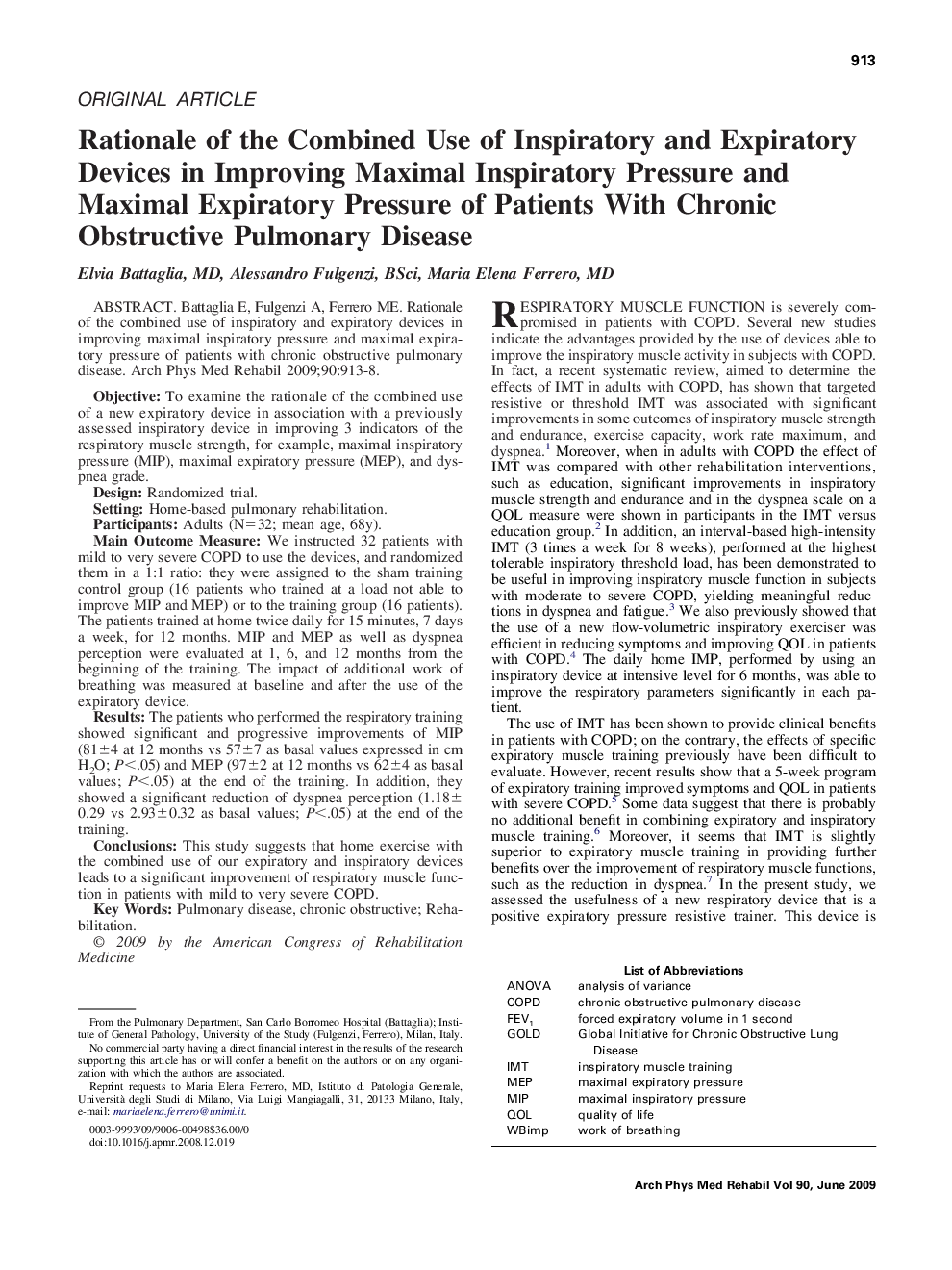| کد مقاله | کد نشریه | سال انتشار | مقاله انگلیسی | نسخه تمام متن |
|---|---|---|---|---|
| 3451498 | 1595765 | 2009 | 6 صفحه PDF | دانلود رایگان |

Battaglia E, Fulgenzi A, Ferrero ME. Rationale of the combined use of inspiratory and expiratory devices in improving maximal inspiratory pressure and maximal expiratory pressure of patients with chronic obstructive pulmonary disease.ObjectiveTo examine the rationale of the combined use of a new expiratory device in association with a previously assessed inspiratory device in improving 3 indicators of the respiratory muscle strength, for example, maximal inspiratory pressure (MIP), maximal expiratory pressure (MEP), and dyspnea grade.DesignRandomized trial.SettingHome-based pulmonary rehabilitation.ParticipantsAdults (N=32; mean age, 68y).Main Outcome MeasureWe instructed 32 patients with mild to very severe COPD to use the devices, and randomized them in a 1:1 ratio: they were assigned to the sham training control group (16 patients who trained at a load not able to improve MIP and MEP) or to the training group (16 patients). The patients trained at home twice daily for 15 minutes, 7 days a week, for 12 months. MIP and MEP as well as dyspnea perception were evaluated at 1, 6, and 12 months from the beginning of the training. The impact of additional work of breathing was measured at baseline and after the use of the expiratory device.ResultsThe patients who performed the respiratory training showed significant and progressive improvements of MIP (81±4 at 12 months vs 57±7 as basal values expressed in cm H2O; P<.05) and MEP (97±2 at 12 months vs 62±4 as basal values; P<.05) at the end of the training. In addition, they showed a significant reduction of dyspnea perception (1.18±0.29 vs 2.93±0.32 as basal values; P<.05) at the end of the training.ConclusionsThis study suggests that home exercise with the combined use of our expiratory and inspiratory devices leads to a significant improvement of respiratory muscle function in patients with mild to very severe COPD.
Journal: Archives of Physical Medicine and Rehabilitation - Volume 90, Issue 6, June 2009, Pages 913–918